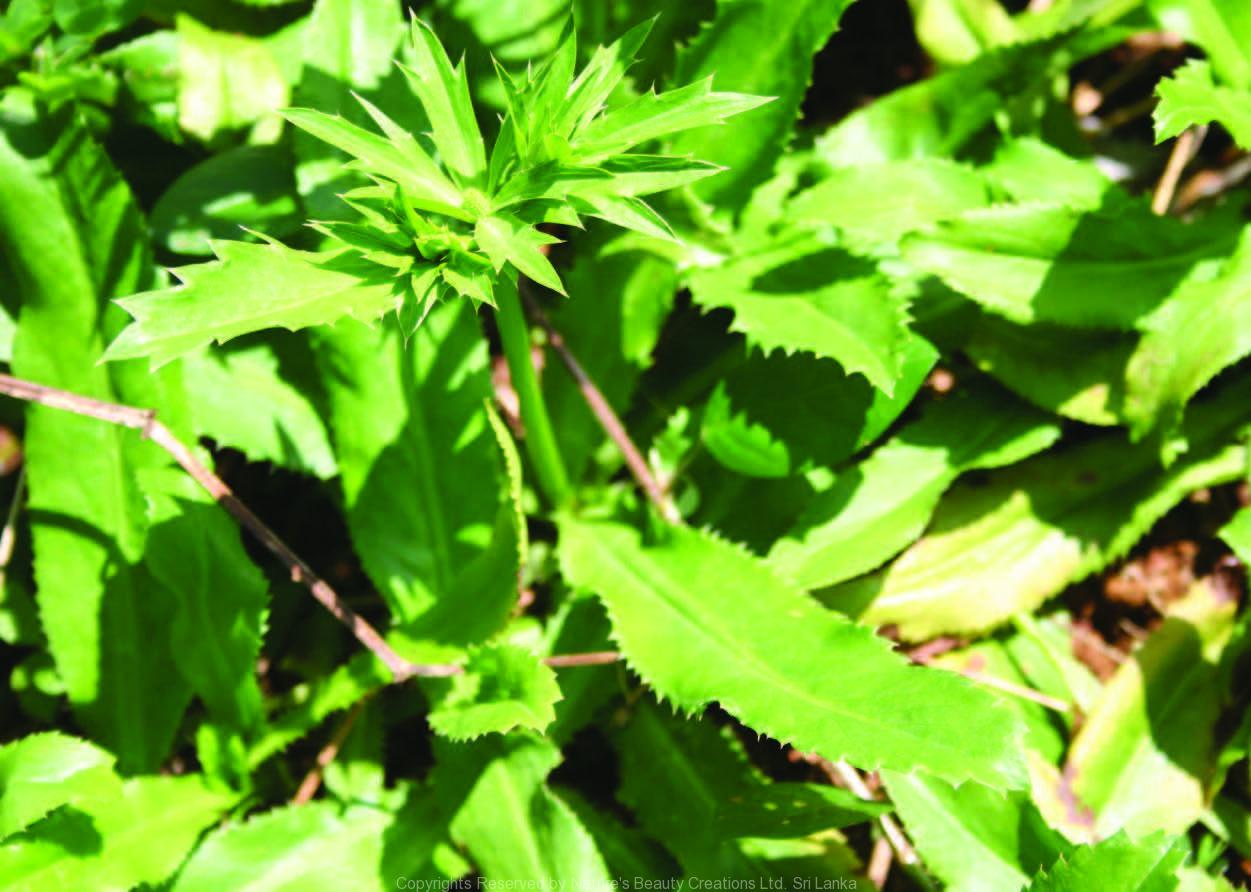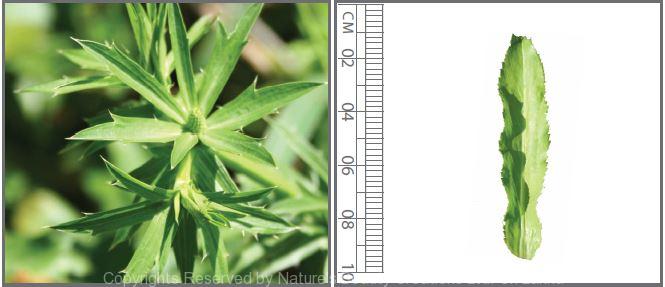

Traditional Knowledge
Useful plant parts :
Leaf
Uses in traditional medicine :
- Soup made out of leaves is used as remedy for vomiting and diarrhoea
- Fresh leaves are taken for colds, flu, diabetes, pneumonia, constipation and malaria
- Crushed leaves are used to treat scorpion stings
Scientific Research
Chemical constituents:
2,4,5-trimethylbenzaldehyde, 2-dodecenal, 3-dodecenal, anethole and terpenes: γ-terpinene, carotol, β-farnesene, α-pinene from aerial parts and seeds; sterols: brassicasterol, campesterol, stigmasterol, clerosterol, β-sitosterol, ∆5 -avenasterol, ∆ 24-stigmastadienol and ∆ -avenasterol
5 5 7
from leaves
Bioactivity :
Hexane extract of leaves: may be effective against topical inflammation; decoction of leaf: anti-inflammatory
Clinical:
Note :
Fresh leave can be used to flavour soups
References : Cardoso, E., (2004), Composition of the Essential Oil from the Leaves of Eryngium foetidum L. from the Venezuelan Andes, Journal of Essential Oil Research, 16(1), 33-34. García, M. D. et al., (1999), Topical antiinflammatory activity of phytosterols isolated from Eryngium foetidum on chronic and acute inflammation models, Phytotherapy Research, 13(1), 78-80. Pino, J. A. et al., (1997) Chemical composition of the seed oil of Eryngium foetidum L. from Cuba, Journal of essential oil research, 9(1), 123-124. Saenz, M. T. et al., (1997), Antiinflammatory and analgesic properties from leaves of Eryngium foetidum L. (Apiaceae), Phytotherapy Research, 11(5), 380-383.
Copyrights Reserved By
Natures Beauty Creations



